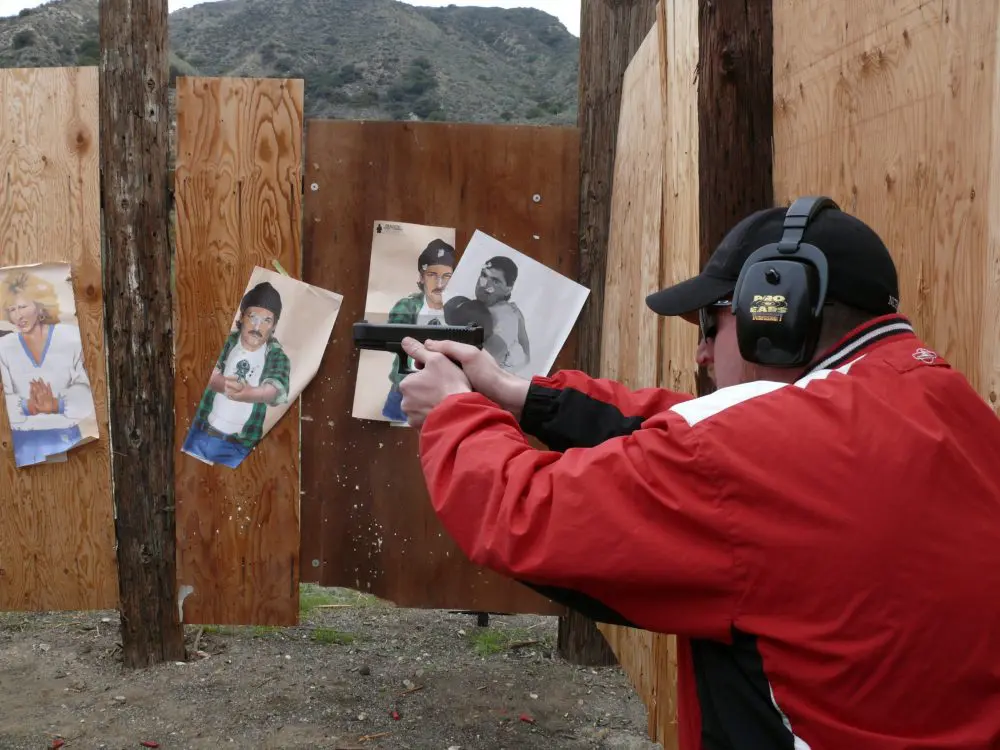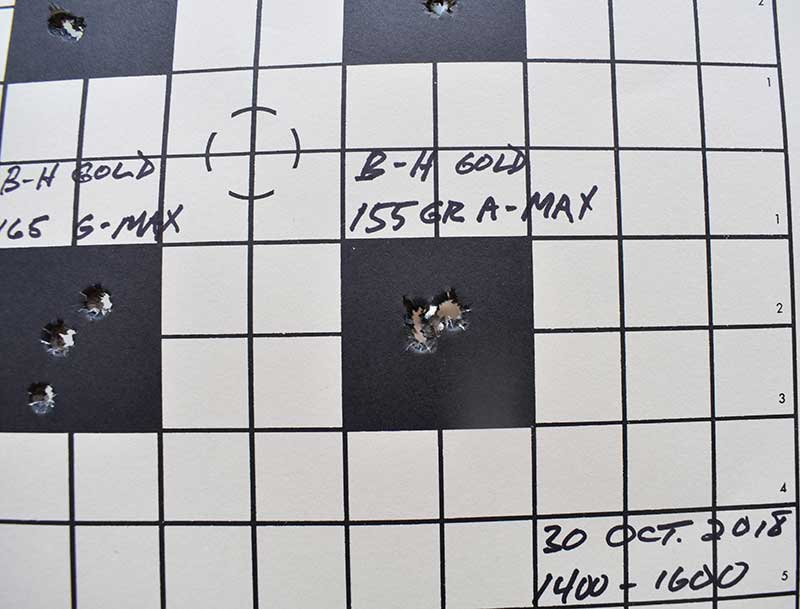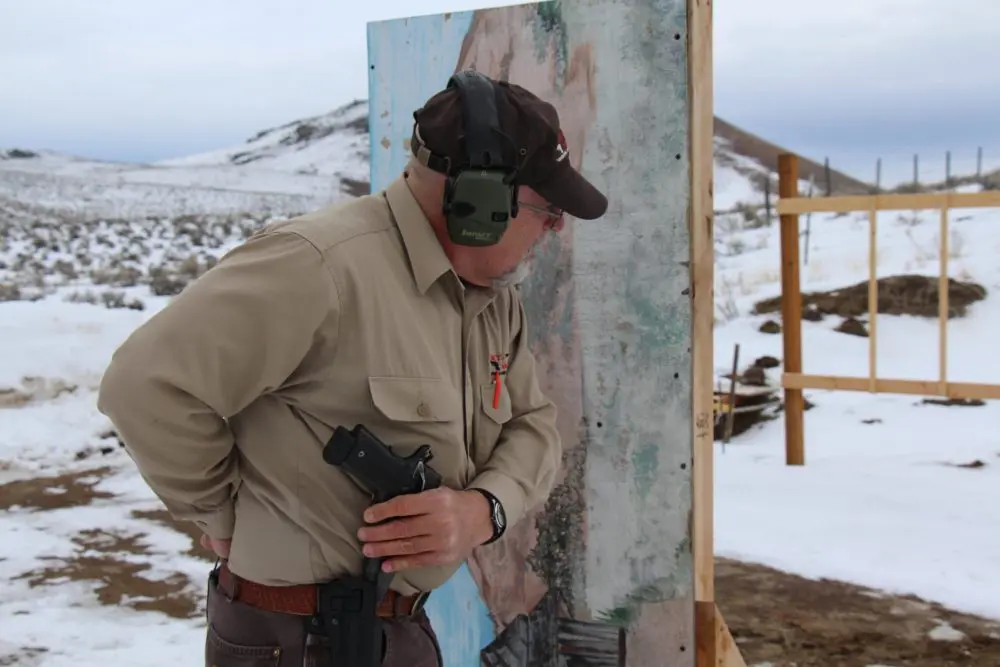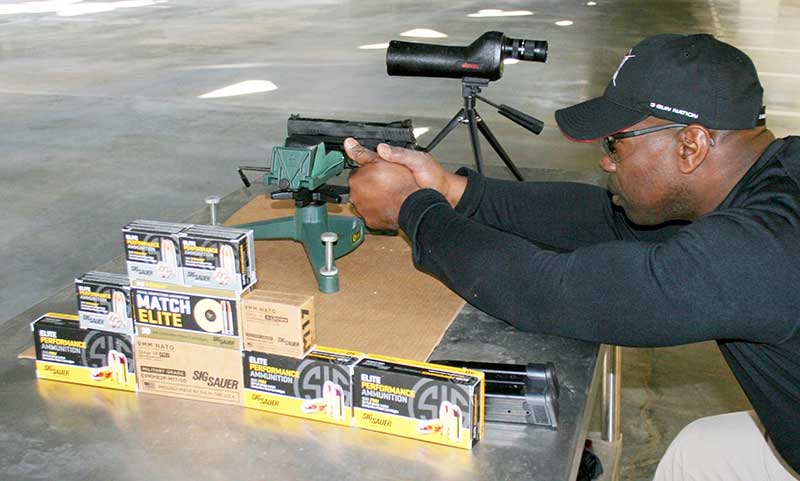
Everyone old enough to be a regular S.W.A.T. magazine reader remembers the ammunition shortage of 2008 to 2013 that was triggered by Middle East combat and Obama’s anti-gun policies, which resulted in a veritable panic of firearms sales. Reloading components and .22-caliber rimfire rounds were in very short supply. Walmart and other stocking dealers were sold out as soon as a shipment made it to the shelves.
As the Obama Administration neared its end, things began to ease up. This was partly caused by the proliferation of new large and small ammunition loading facilities that offered standard, custom, and remanufactured ammo that traditional ammunition factories did not.
Although competition and availability increased, the cost of ammunition did not recede. Many shooters turned to foreign steel cased and corrosively primed ammunition for plinking and cheap practice. Predictably, as demand increased, the cost of this “junk” also rose, and “cheap” centerfire ammunition became a distant memory. In spite of the higher cost of premium ammunition, serious gunmen were willing to invest in high performance and extremely accurate loadings for competition, hunting, and personal defense.
While not the proverbial early bird, SIG Sauer (SS) entered the high-performance ammunition field in 2014. In a short period of time, this international company has become recognized as a producer of exceptional rifle and pistol loads that complement their exceptional firearms.
From a modest beginning, SS’s inventory has grown to 30 handgun loads in the popular defensive and competition calibers, and 15 rifle calibers in practice, competition, and hunting versions. This inventory is constantly growing and in 2018, with the encouragement of members of their pro shooting team, SS filled a vacuum with its latest product—9x19mm 147-grain Match ammunition. All JHP ammunition, which includes this latest Match offering, has nickel cases for increased reliability of function. Training or FMJ cartridges wear brass cases.
Table of Contents
GROOMED FOR COMPETITION
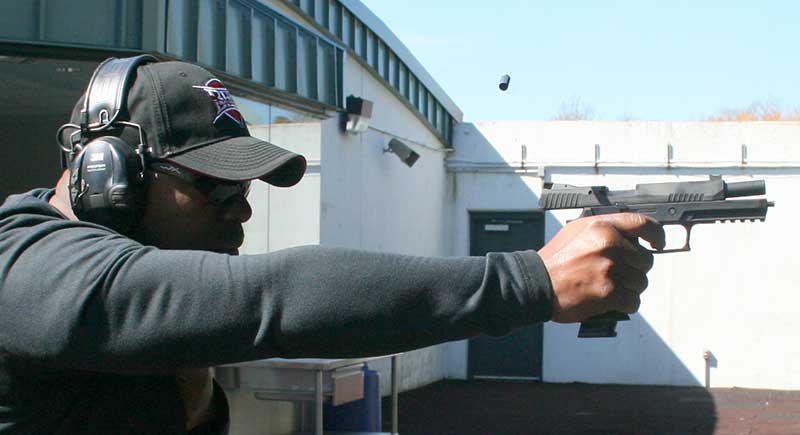
This Match load was groomed for dynamic run-and-gun pistol competitions, where recoil control and the ability to fire very fast consecutive shots with a high degree of accuracy are required. The same 147-grain JHP V-Crown projectile, coated nickel cases, and fast, clean-burning powder are used, but the charge is reduced.
Depending on barrel length, velocity can range from 860 to 900 feet-per-second (fps) with power factors between 126 and 132. In fact, the 50-round Match Elite ammunition box states, “Meets Minimum 125 PF.” From a five-inch barrel, all SS 9x19mm loads exceed the minimum PF. Pro pistol shooter and SS Team Captain Max Michel, Jr. claims that this Match round is the most accurate he has ever shot and on average it delivers groups under two inches at 25 yards. In addition to all this reputed performance, the V-Crown “Stacked Hollow Point” will expand in soft tissue.
At $30 per 50 rounds, I decided to compare the new Match ammo with SS’s gamut of 9x19mm offerings. Reflecting the increasing popularity of the 9mm Luger cartridge, SS has developed nine different loads in that caliber, ranging in weight from 115 to 147 grains.
It seemed appropriate to conduct this evaluation with SS’s competition-ready P320 XFive pistol. Incidentally, you cannot visually differentiate the Match round from the 147-grain JHP duty load, so I paint the cartridge bases with a marking pen to keep them apart.
BETHARDS IS BACK
I was fortunate to have Top Shot: All Stars’ finalist William Bethards conduct the accuracy and felt recoil phases with an iron-sighted SIG Sauer P320 XFive pistol.
Bethards prefers the green fiber-optic front sight over red ones and likes the way the tube sits just below the flat top of the front blade. He uses the optic only for speed shooting and focuses on the black flat top for precision work.
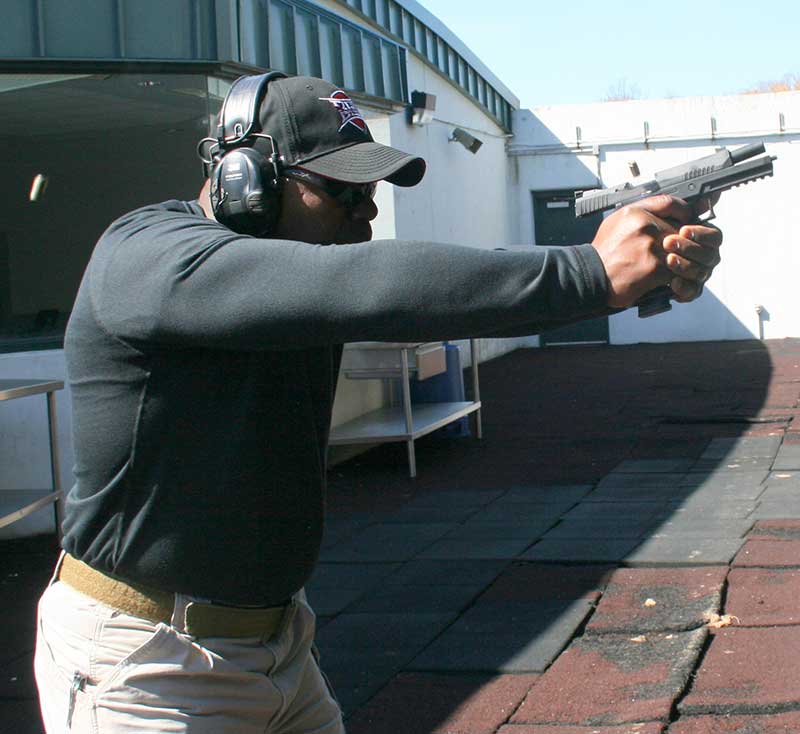
He kept commenting on how well the gun felt in his big, meaty hands. Because the stippling was inlaid for cosmetics, it nullified any effect it had on assisting the grip. Raising the stippling or providing a palm swell would remedy that deficiency. Because of where he happened to place his support thumb, the takedown lever cut into his thumb and was a distraction.
He had no problem with its six-pound trigger but thought it was long and mushy, and reset was slow. He felt he could operate the trigger “faster than the XFive could cycle.” Overall, he thought the pistol had lots of competition potential and, without all the bells and whistles, could function as a duty sidearm as well.
OUT-OF-THE-BOX ACCURACY
We used an indoor facility to eliminate environmental and weather conditions and shot from a handheld rest at 25 yards.
SIG Sauer +P 124-grain NATO rounds initially shot high but settled into lower groups. The other seven full metal jackets (FMJ) and V-Crown JHPs started low and finished high. As the pistol broke in, groups registered lower on the target. To preserve my limited supply of SIG Sauer ammunition for the evaluation, we sighted in with Speer 147-grain G2 JHP. Right out of the gate with a single-shot fouled barrel, Bethards put two in the x-ring and one in the 10 ring. We quit right there and proceeded to launch the nine different loads offered by the Newington, New Hampshire factory.
RECOIL DIFFERENCES
Bethards rated the XFive as a “good shooter” with all the loads. Felt recoil is individual, and he judged there was not much difference among all the 147-grain offerings, including the Match ammunition. From years of Marine Corps, civilian and factory sponsored competition, Bethards has developed a crushing grip and easily controls all loads from standard to +P+ pressure ammunition.
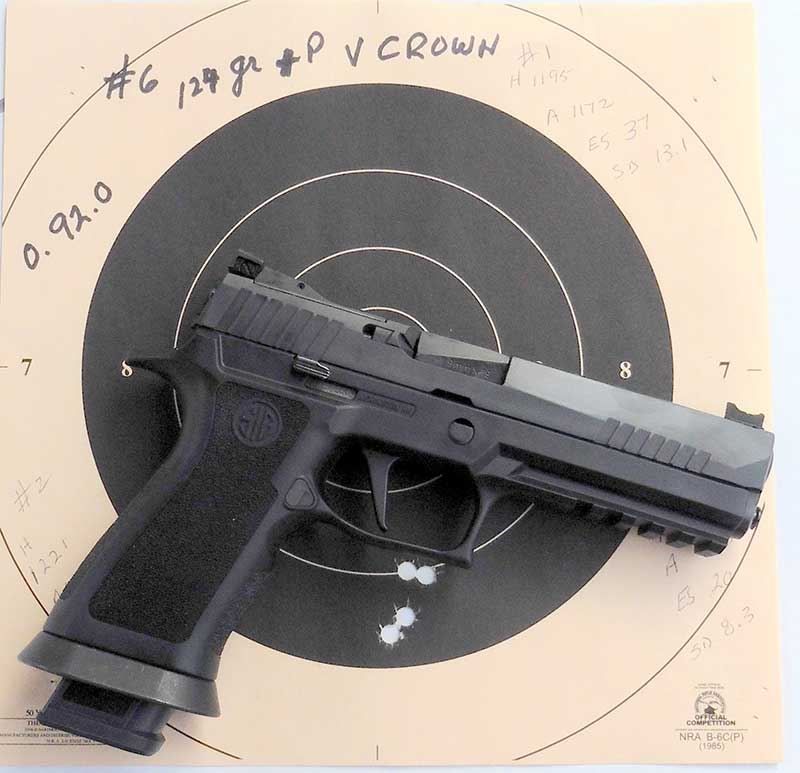
The Match ammunition’s muzzle rise is visibly less than that of the 147-grain FMJ round. The Match round is approximately 100 fps slower than the FMJ version and 170 fps less than the JHP duty fodder. When manually cycled, the slide will periodically fail to go into full battery. If unnoticed, the slide will move and complete its lockup when the trigger is pulled. Slight movement like this could result in an errant shot, so employing the slide release generally eliminates this problem.
HOT LOADS
Reliability was 100%. Six loads were over 1,200 fps with the +P NATO FMJ producing a high single-round velocity of 1,301 fps. This hot rod comes close to the major power factor (PF) of 165, with a PF of 161.32. That round and its V-Crown JHP counterpart are supposed to have identical velocities, so that practice FMJ complements the JHP duty round. However, the JHP ammunition average was 109 fps slower than the FMJ offering.
CONCLUSIONS
While the accuracy of the 147-grain Match ammunition was good, in general the entire SIG Sauer line of 9x19mm was, with one exception, very good. All loads make the minor caliber PF of 125. The main advantages of the Match round are lower recoil and faster recovery that support high-speed shooting while maintaining good accuracy. These are high-dollar BBs: 1,000 rounds will cost you about six Bennys.
SOURCE
SIG SAUER
(603) 610-3000
www.sigammo.com
SIG SAUER 9X19MM PERFORMANCE
| ROUND | AVERAGE VELOCITY (fps) /POWER FACTOR | ACCURACY (inches) |
| 115-gr. (VC) JHP | 1,207/138.31 | 1.38 |
| 115-gr. FMJ | 1,214/139.61 | 2.54 |
| 124-gr. FMJ | 1,202/149.05 | 1.09 |
| 124-gr. VC JHP | 1,207/149.67 | 1.09 |
| 124-gr. +P FMJ | 1,280/158.72 | 2.73 |
| 124-gr. +P VC JHP | 1,172/145.33 | 0.92 |
| 147-gr. VC JHP | 1,079/158.61 | 1.40 |
| 147-gr. FMJ | 1,007/148.03 | 1.62 |
| 147-gr. Match JHP | 910/133.71 | 1.87 |
Five-round groups obtained from a handheld rest at 25 yards. Flyers not included in measurements. Iron sights employed. Average velocities obtained via CED M2 chronograph, ten feet from the muzzle. Temperature: 50 degrees. VC= V-Crown


